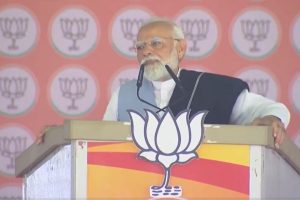Economists worldwide would agree that differences in institutions serve as the main determinants of prosperity among countries. There is also enough empirical evidence to show that some countries undergo political transitions and reform their institutions to move into enduring paths of economic development.
Douglas North (1990) in his book “Institutions, Institutional Change and Economic Performance” defines institutions as the “rules of the game in a society”.
As early as the eighteenth century, Adam Smith in his “Wealth of Nations” noted the importance of a system of justice, private property rights and the Rule of Law.
Rodrik et al (2002), while assessing the relative importance of institutions, observe that institutional determinants “trump all others”.
Aron (2000), in “Growth and Institutions, a review of the evidence” found that there was a positive correlation between seven indices of development to institutions relating to property rights and law enforcement, ten indices with civil liberties, another ten with political rights, four with cooperation and fifteen indices that correlated economic development with democracy. Studies by the UNFAO in 2006 and by Myrdal (1992), upon a comparative analysis of development trajectories, found that the unequal land ownership in Latin America, exacerbated by population growth, was the primary cause of its underdevelopment.
The introduction of improved technology in agriculture only facilitated landowner elites to consolidate their control over agriculture, thereby perpetuating path dependency in the form of institutions. On the other hand, while greater equality and functional economic institutions contributed to the economic development in Vietnam, the concentration of power and instability of the government to invest in infrastructure and public welfare impeded development in Nicaragua. Birell et al (2005) found that although the institutional capacity to harness domestic primary resources assisted in the development of Botswana and Mauritius, such experience was belied in Sierra Leone, Angola, Equatorial Guinea and in Nigeria. Banerjee and Duflo (2011), while recounting the findings of Abhijit and Lakshmi Iyer (2005), observed that in India, the two distinct systems of land revenue collection during British rule produced contrasting results.
Areas, where the farmers were responsible for tax payments, demonstrated larger agricultural yields, as compared to those places where landlords were responsible for collecting taxes. In the former case, more schools and hospitals were built as public welfare measures along with increased social cooperation. Similarly, Bardhan (2006), found that development-oriented institutions ensured a greater flow of information and greater resource saving whereby the state is able to suitably mitigate economic risks. Ferrini (2012) observed that institutions determine the costs of economic transactions, spur development in the form of contracts and contract enforcement, establish a common commercial code and increase the availability of information, all of which reduce costs of transactions, risk, and uncertainty.
According to Ferrini, institutions also determine the degree of appropriability on returns to investment, protection of property rights and expropriation of rights by elites as well as the conduciveness of the ecosystem to cooperation and enhanced social capital. Inclusive and participatory institutions increase the flow of information and resource pooling to mitigate risks and ensure sustained levels of wealth.
The World Bank’s Commission on Growth and Development, working paper no 10, entitled “Role of Institutions in growth and development” based on their cross-country studies of Asian, Latin American and African countries, concludes that the main determinants of cross-country differences in per capita income are differences in their economic institutions, which reflect the outcome of different collective choice.
The Bank asserts that solving the problem of development entails pushing the appropriate institutions to move towards good political and economic equilibrium. According to the Bank, the African experience would indicate that the promotion of democracy and accountability would largely, but not universally, lead to better economic policies and institutions. Latin American history, on the other hand, would disprove the Washington consensus that political equilibrium can necessarily be changed in introducing democracy. China’s experience, on the contrary, would testify to how the country embarked on a growth trajectory post-1978 as the political equilibrium changed in such a way that it gave more power to those who wanted to push through reforms.
A study by MIT (2005) named “Institutions as a fundamental cause of long-run growth” would refer to the relevance of good economic institutions such as secure property rights and well-developed financial markets in explaining the prosperity of England and Netherlands and in institutions such as the “organization of overseas trade” that influenced the 16th-century rise in Atlantic trade.
The study also refers to the emergence of democracy in 19th-century Europe that determined the economic institutions and policies such as the distribution of economic resources. In fine, as Ferinni would put it, institutions strongly influence the economic development of countries in determining the framework in which the economic exchanges occur. In the above backdrop, India ticks all the right boxes. It is one of the largest democracies in the world with the longest written Constitution that guarantees Fundamental Rights to life and liberty while the Directive Principles lay a strong foundation for economic policies.
Property rights are protected by a well-structured legal framework, the provision of Separation of Powers provides for the three pillars of the judiciary, the executive and the legislature. Well-regulated financial markets and a vibrant domestic market act as a boost to production. India boasts of a considerable public sector investment (contributing to 2.2 per cent of the GDP, expected to climb to 2.9 per cent in 2023).
The regularity of the election process ensures the accountability of those in power to the electorate. The office of the Comptroller and Accountant General is responsible for monitoring the probity in public expenditure. An active media and the supporting legal enactment of the Right to Information Act in 2005 facilitate the dissemination of information. India also reports vibrant social capitalism.
The most important policy measure that has triggered India’s growth trajectory, however, lies in its strong reliance on the reform process. Post-1991, India introduced Industrial delicensing that freed the private manufacturing sector from licensing regulations, as well as the devaluation of the Indian rupee in 1996, to provide a greater competitive edge to its software and other exports sector, to match increased competition from foreign markets.
Further actions in this direction would involve the reduction of the average nominal tariff rates, abolition of the consumer goods quota in 1991, tariff liberalization in the intermediate goods sector and preferential trade agreements with Singapore, Sri Lanka and Thailand to improve India’s competitiveness in the international markets.
The legacy of FERA was abolished in 1991 raising the attraction of foreign investment; further, foreign investment through the portfolio route enabled domestic sector industries to take advantage of the enhanced limit of foreign equity investment. India’s entrepreneurial instincts which rose to the occasion to take advantage of the investment-oriented economic environment free of the regulatory process acted as the catalyst in this growth process.
The 1990 reform era, however, failed to energize the power sector or to become more inclusive as interstate disparities grew. Trade union laws failed to be labour-friendly and the agricultural sector went into a decline. Hence what India needed was financial crises and technocratic conviction to move its economic policies in a significantly new direction.











